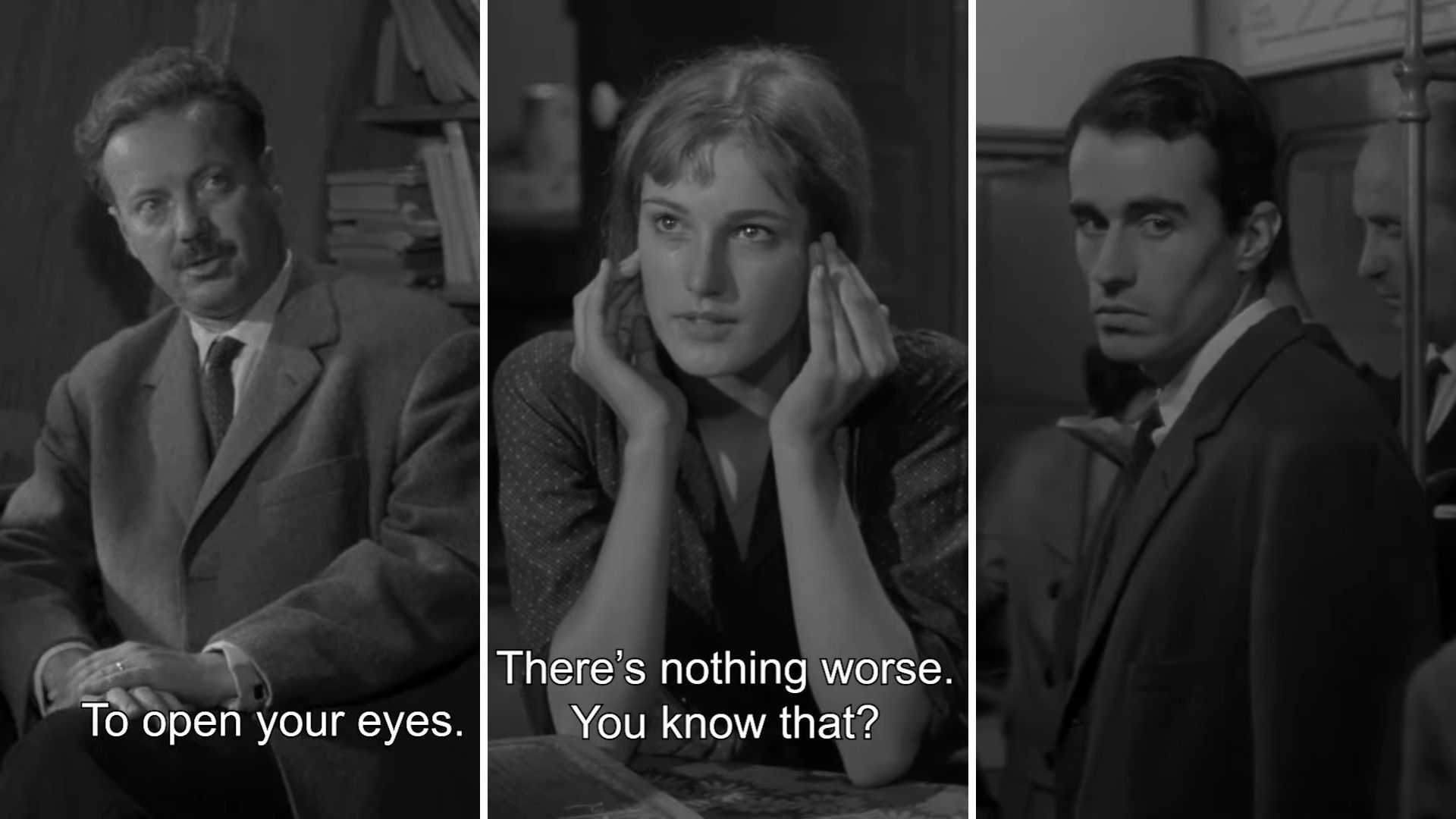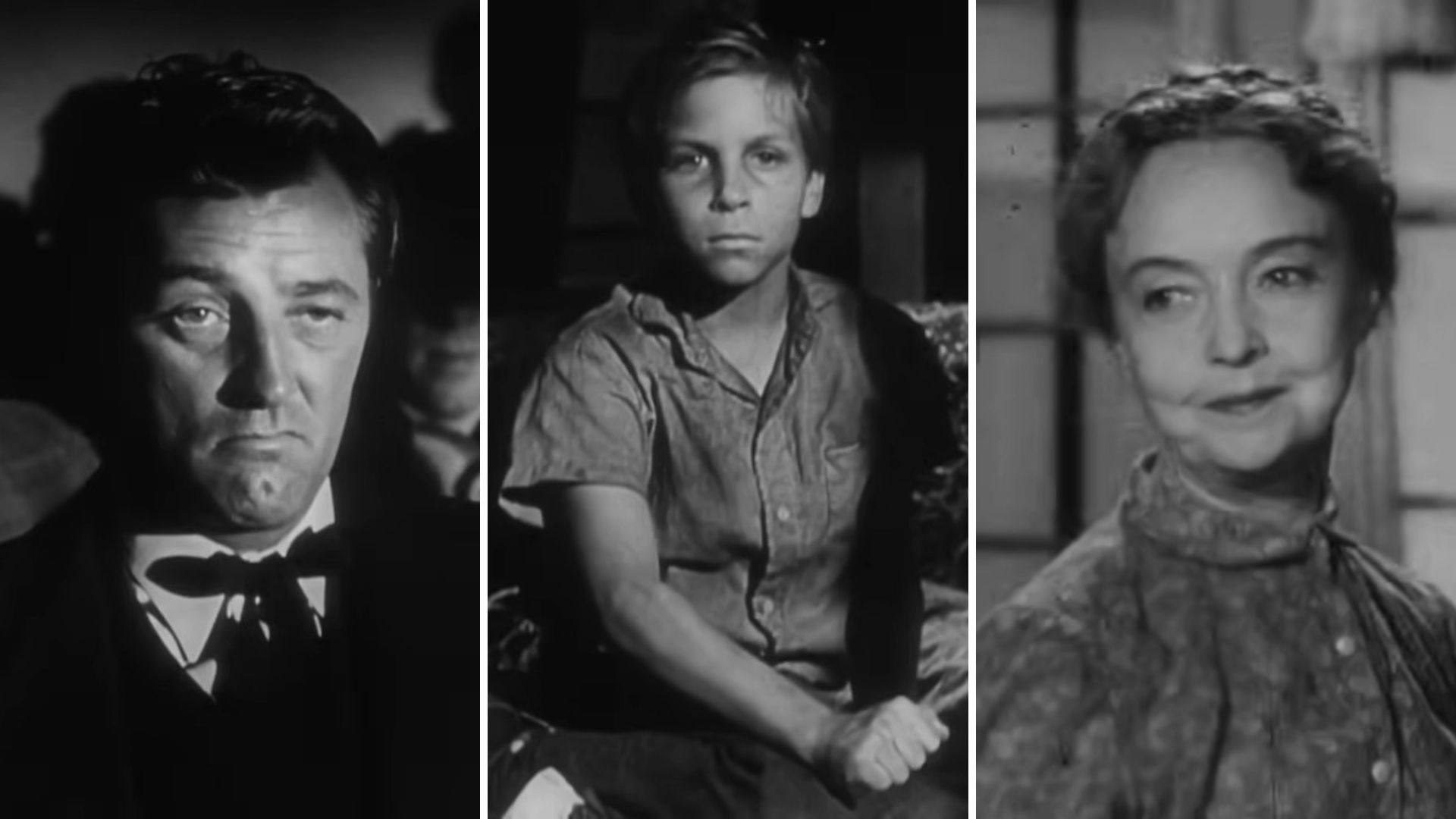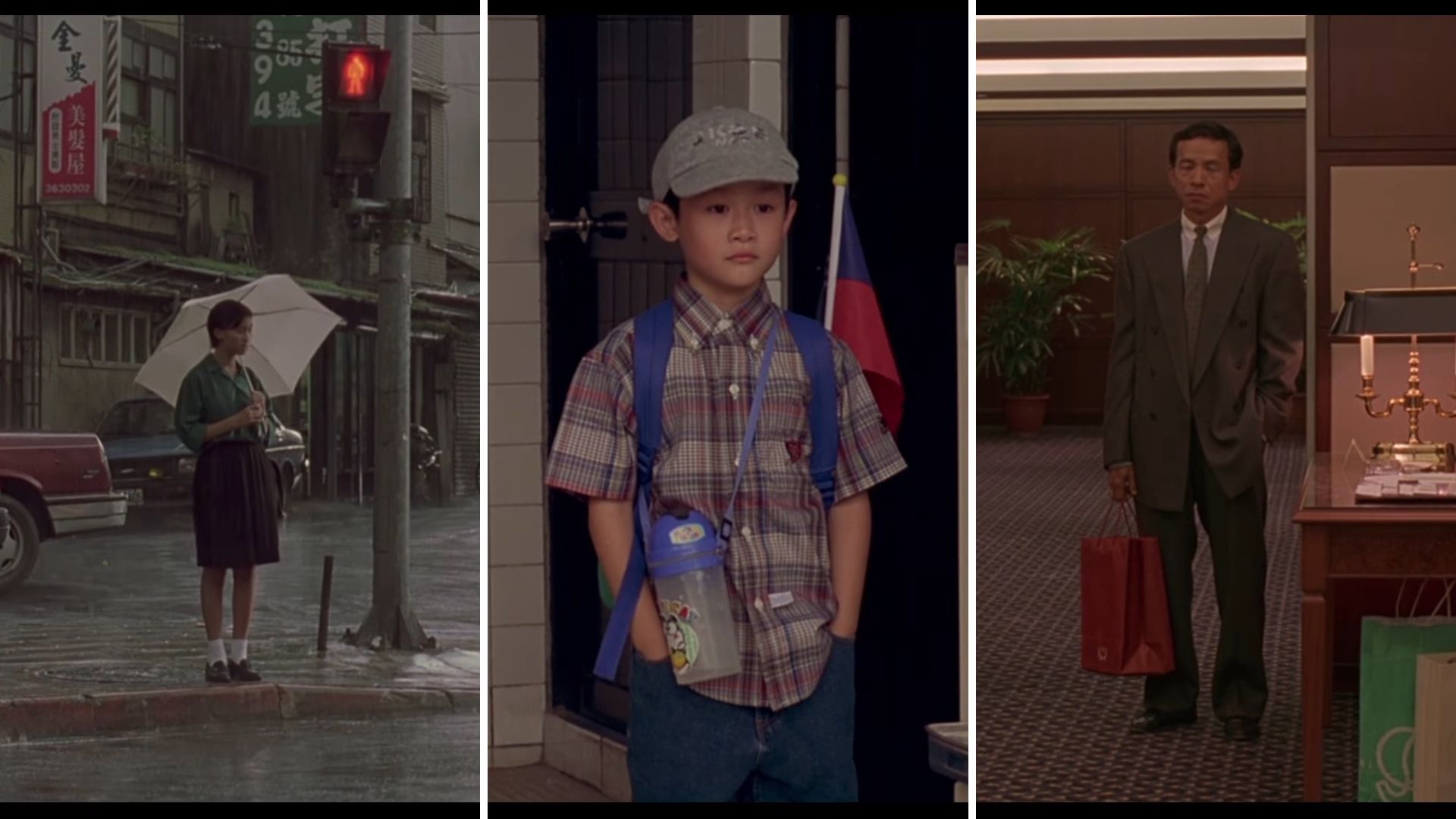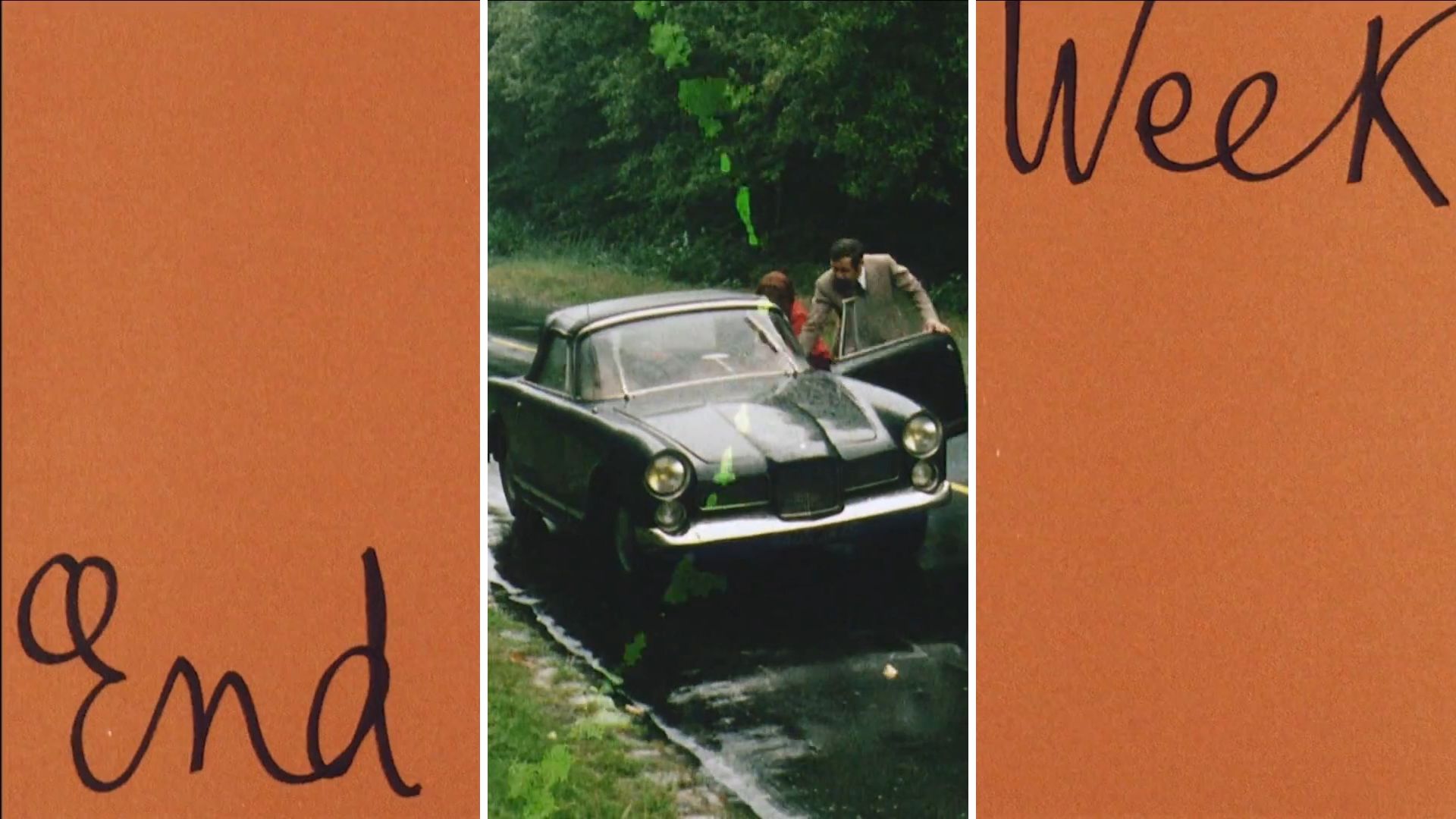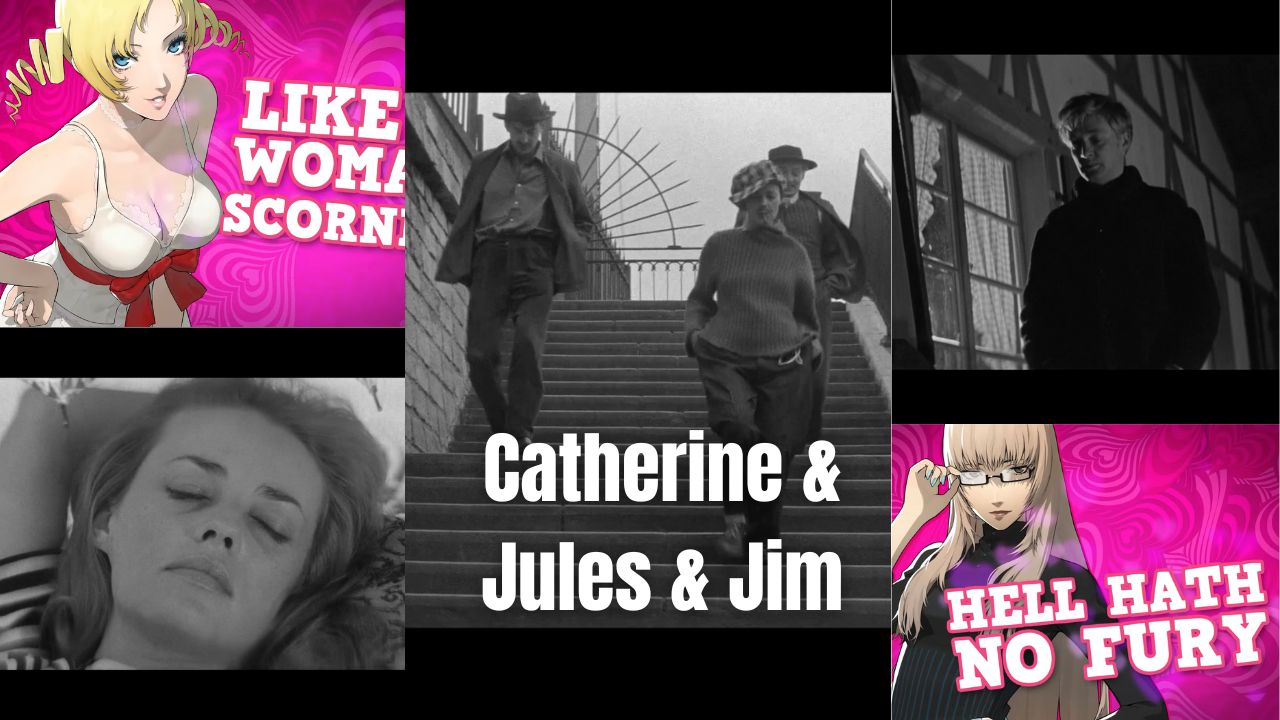
Jules & Jim, the 1962 French New Wave film from Francois Truffaut, is one of the most influential pieces in cinema history. The movie centers around a love triangle of Jules, his wife Catherine, and their friend Jim. Countless films have drawn inspiration from the films’ narrative and cinematography techniques. But does this film have a further reach than just cinema? Has the influence of Jules and Jim transcended just the medium of cinema and made its way into other forms of art?
Catherine is a 2011 video game from Atlus Entertainment. The game focuses on a love triangle between Vincent, his girlfriend Katherine, with a K, and a seductress named Catherine with a C. In the game, you play as the hero, Vincent, a lackadaisical man who is unwilling to commit to his girlfriend of five years and instead accidentally ends up with another beautiful young woman in his bed. His trauma and guilt from his infidelity, leads to him having a recurring nightmare where he must climb a falling tower and occasionally escape nightmarish manifestations of his worst fears.
At first glance, this game seems to have little in common with Jules and Jim aside from a protagonist named Catherine and a vague love triangle. But upon further inspection these two pieces seem intrinsically linked. Sharing many of the same themes like relationships, inability to commit, and a concern about the greener grass away from a life one has chosen.
Catherine

Jules and Jim is really a story about Catherine. A woman who uses her charm and sex to come between two friends and in the process, ruins the lives of those around her. Catherine, is really a story about Vincent. A sort of loser dude who spends his nights drinking at the bar and finds himself unable to commit his longtime girlfriend.
The most interesting dynamic between these pieces of art is the correlation between the characters in each. In Jules and Jim, we have three main leads. We have the tituliar Jules and Jim. Two friends, one French and one Austrian, who are inseparable pals in their youth. Jules is the more pragmatic of the two. He wants love and yearns to be able to settle down with a woman. Jim on the other hand is more of a player than his friends. While they both have their own fair share of sexual escapades, Jim is less willing to commit. He seems to content to work on his career and take a partner when the time is right. The problem with their friendship arises when Catherine enters the picture.
Catherine
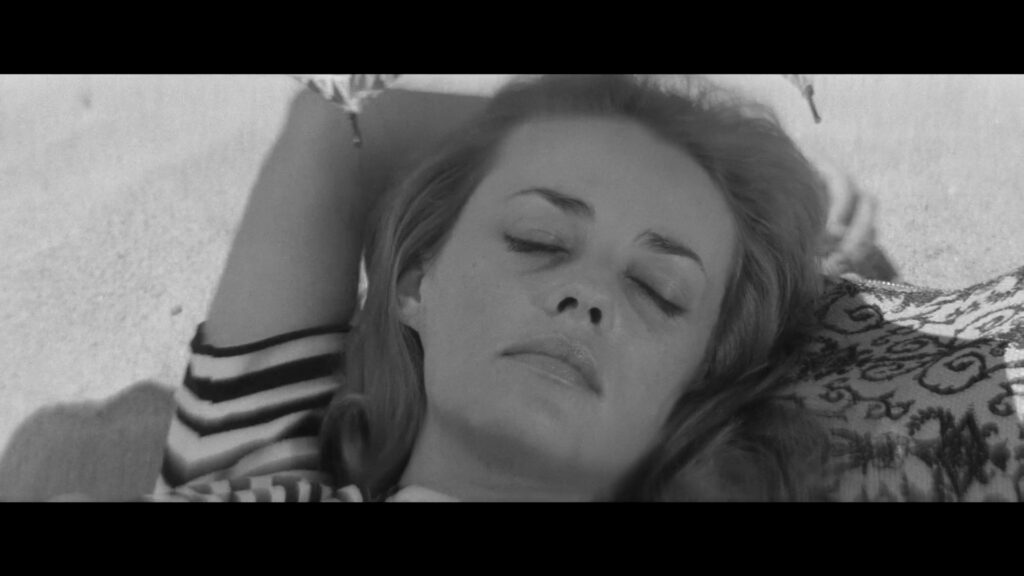
Catherine is played to perfection by Jeanne Moreau. She is gorgeous on screen, and the camera loves her. Truffaut frames every scene in the most flattering way. There’s a scene around the end of the first act where the camera stops on different close-ups of her face. Framing her in these gorgeous stills that feel like the characters want to stop and remember her face. They are mental snapshots made by each of the men, and it becomes easier and easier to understand why both men would fall in love with her. Jules is eventually victorious in landing Catherine. He is sweet, stable, and loving. All the things a typical woman would claim to want in a partner. The only problem is that Catherine is not a typical woman. She’s a carefree spirit who craves adventure and attention. Their marriage is tumultuous, and Jules reveals to Jim later in the film that Catherine has taken multiple partners and is prone to leave for days on end without warning.
The life Jules is able to give to her. A serene one in a quiet countryside for them and their daughter is a life Catherine despises. Even if she would never say it out loud. Catherine needs the adventure of the big city, late nights, and drunken partners. When Jim comes to visit them after World War 1, Catherine finally finds the excitement she needs. She takes Jim as a lover, an arrangement that Jules agrees to only because he knows he cannot keep Catherine to himself. He knows that he is not enough for her, and the only chance she has of staying with him in their serene, quiet countryside is to bring in a friend to satiate her desires. He also knows that this will only satisfy her for a short time, and the second Catherine grows bored of this arrangement, it’ll be off to the next escapade.
Vincent
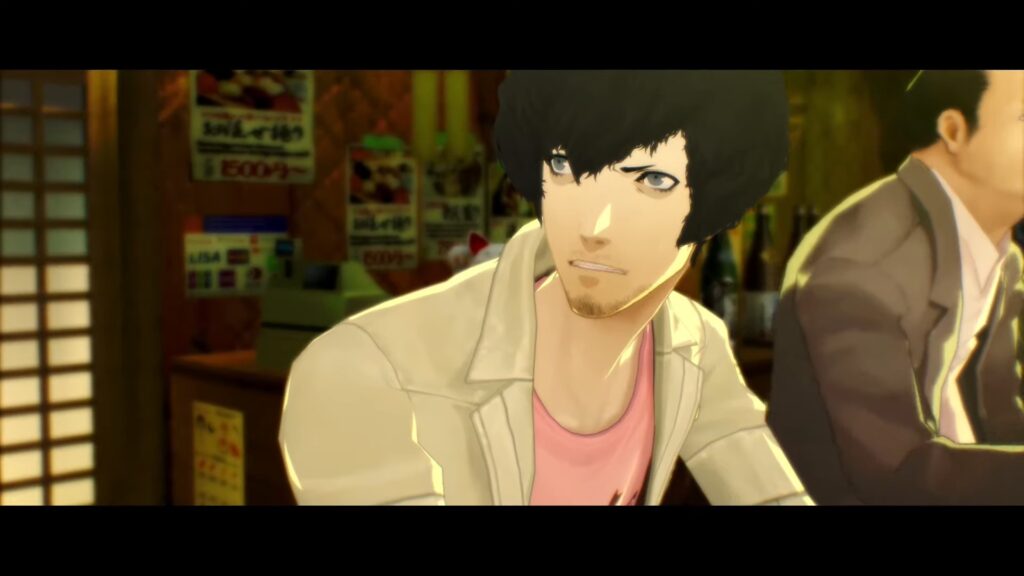
In Catherine, Vincent is less adventurous and outgoing. He’s more of a barfly, one of the vampires who stays at the bar until closing every night. His life is a little more open-ended than the characters in Jules and Jim because he is the player character, and we, the player, have the chance to mold and create a person we want. We can roleplay as a jerk who sends Katherine, his longtime girlfriend, annoying text messages, or be a kind guy. Someone trying to atone for their sins with sincerity and love. The game opens with Vincent making a terrible mistake. After the game introduces Vincent, Katherine, and the general gameplay mechanics, a wrench gets thrown into the narrative and plot of the game. We are introduced to Catherine with a C. A sultry blonde woman, Vincent meets at the bar and subsequently spends the night with but has no recollection of doing so.
Katherine, with a K, is almost the polar opposite of Catherine with a C. K Katherine is beautiful, smart, and pragmatic. She has goals, dreams, and ambitions. She wants marriage, marriage to Vincent, and she’s truthfully become a bit naggy about the whole situation. Vincent doesn’t have a great job, doesn’t seem to have a ton of motivation, and lives in a small, unkempt apartment. He’s still finding himself, not sure of what he wants in life, but searches for the answer every night in a bar called the Stray Sheep.
Betrayal
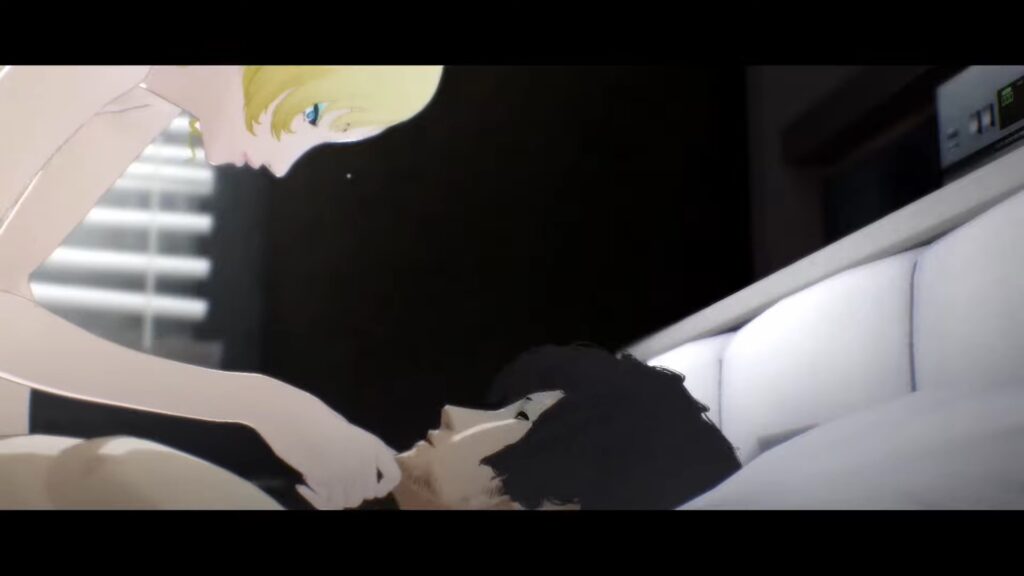
C Catherine, whom Vincent drunkenly wakes up beside the morning after the games first night, is different. She doesn’t nag Vincent at all, says she likes the cigarette smell on his breath. She doesn’t care that he stays out late at the bar, drinking his pain away. Catherine just wants to have fun. And doesn’t care whose life she ruins in the process.
In the game, Catherine with a C feels very much like the Catherine of Jules and Jim, just a little less subtle. She’s beautiful, promiscuous, and finds comfort in the bed of another. Katherine with a K feels more like the Jules character. She wants a simple life. A faithful partner and someone to grow old with. And Vincent, he feels like Jim. A character of our own choosing. The person who is most conflicted and struggles to make the correct choices. All these characters feel like inspirations of one another, and it’s interesting as the narrative progresses in Catherine to see all the different ways these two pieces of art intersect.
And Baby Makes Three
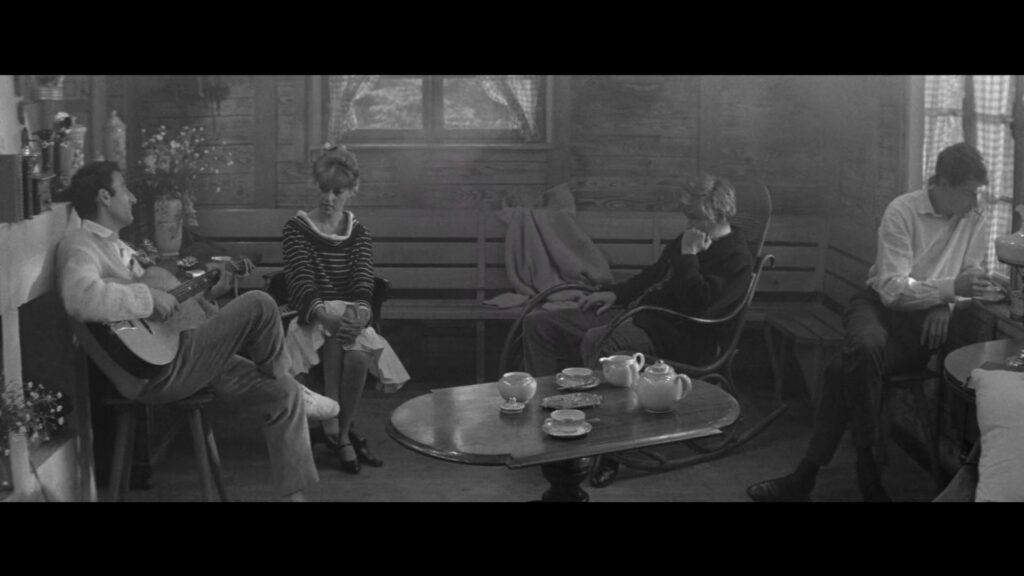
In Jules and Jim, after Jim and Catherine begin their relationship, Catherine decides she wants to have a child with Jim. She already has one with Jules, but she feels her life will be more complete, have more meaning, and she will be more deeply connected with Jim were the two to have a child together. Jim is receptive to this; he wants to have a child with her and become married, but first, there is something he must do. He must end things with Gilberte, his fiancée he left back in Paris. Jim begins to second-guess himself and his decision to marry Catherine. Mainly because he knows the time with her in the future will never be as good as the time they had in the past. He can already see the rose colored glasses, how his imagined life with Catherine, Jules, and their respective children is just a fantasy. A moment in time that is too good to be true, and the happy times can never last. At least not the way they are in the beginning. Love is a drug. And the high soon fades away. The only way to get back that high feeling is with someone else. Someone new.
Throughout Vincent’s story in Catherine, he is given glimpses of the early days of his and Katherine’s relationship. He is shown them in high school. How beautiful she was, how all the boys wanted her. He’s then shown their eventual reconnecting and courtship. Their meeting, the first few dates, and their eventual partnership. He’s given all of these memories to remind him of the good times, but again, he knows things will never be like that. Katherine has changed; he has changed. Their lives are different. Holding on to a memory and feeling of the past is useless. A relationship must move forward, change, and grow. Vincent knows this and struggles with where to go next in his relationship. Should he stay with Katherine, the loyal, loving partner with whom he has become intimately familiar? Or should he cling to new, fun, and flirty Catherine? The wild adventurous soul who appears to desire nothing else but to satisfy Vincent in his every desire? As Vincent struggles with this, his ultimate choice becomes more and more difficult when Katherine makes a giant reveal to him. She’s pregnant with his child.
Hell Hath No Fury
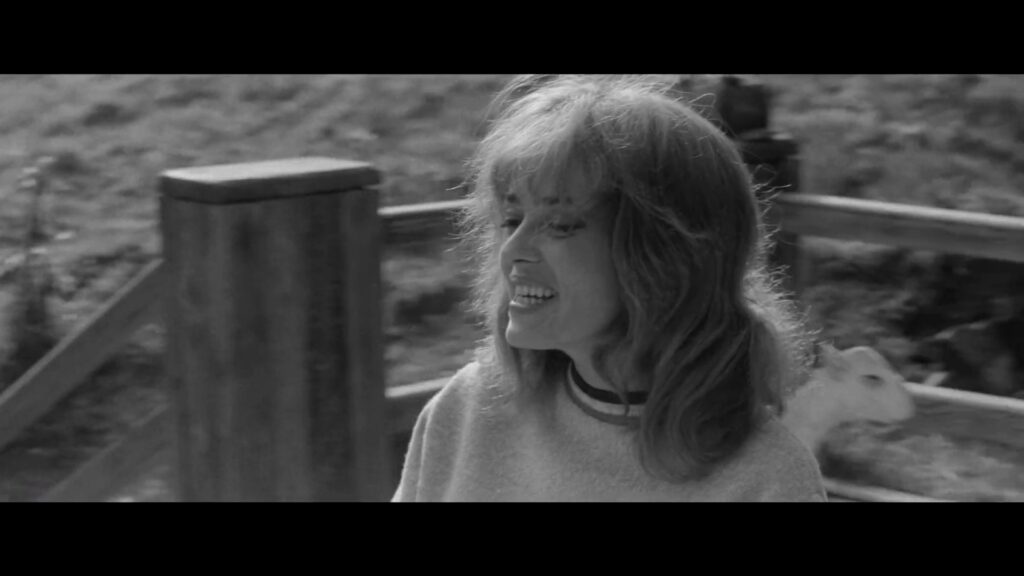
The Catherine of Jules and Jim makes a similar revelation to Jim. After an extended period of time apart, with Jim buttoning up his affairs in Paris, he returns to Catherine, determined to end things. But as always, Catherine gets her way. The two reconnect, and as the film’s narration explains, the promised land was in view. A promised land for Jim and Catherine together. Happy and in love. Until the promised land quickly recedes, as Catherine is unable to become pregnant. Catherine pushes Jim away and rushes back to Jules. Her rock. The stable force in her life that she can always depend on.
Jim then leaves for Paris, back to Gilberte. The fiancée he never left. Because Jim, like Vincent, is indecisive. While away, Jim receives a letter from Catherine explaining she is pregnant with his child. A revelation, Jim doesn’t know if he should entirely believe. He is at a crossroads. He has a life with Gilberte in Paris. A career and a woman who is willing to be his wife. But in the country, he has the potential for so much more. A life with Catherine. A life raising their child alongside Jules, his best friend. It’s the dream he’s always wanted. But Jim knows that these dreams are just that. Dreams.
Dreams
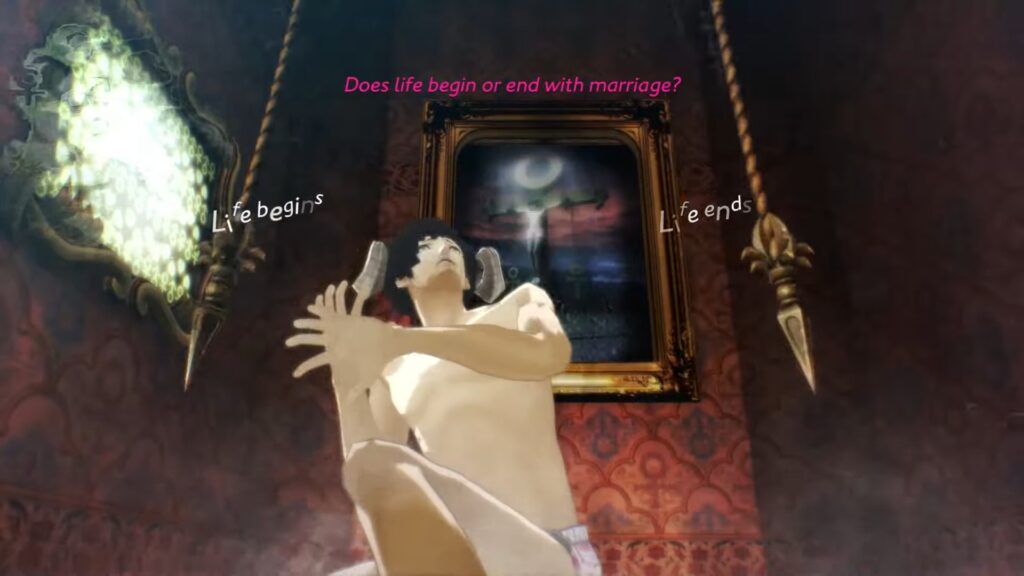
Dreams play an important role in Catherine much more than in Jules and Jim. Literal dreams that plague Vincent every night. Each night after Vincent goes home from the bar, he has the same type of recurring nightmare. One where he must climb a crumbling tower while sometimes being chased by a nightmarish vision. This is the bulk of the gameplay, as the nightmare sequences require traversing these towers and solving puzzles to advance. These puzzles increase in difficulty, and while there is an in-game narrative explanation for these dreams, they also exist as a metaphor for the decisions Vincent needs to make. He’s indecisive and plagued with guilt over cheating on Katherine with…. Catherine. And these dreams are the manifestation of that. Each night, he traverses more and more difficult puzzles while being chased by a monster bride, a grotesque baby, and physical manifestations of his own immorality. Yeah, it’s weird.
But these sections add a layer to Catherine that isn’t available in a film like Jules and Jim. It’s a chance for the player to reflect on where they are in the story and where they’re going. What they want to do. It is difficult to complete these puzzles, and that makes it all the more satisfying when each one is accomplished. This can be seen in Vincent as well, as he triumphs, faces his fears, and overcomes them. Vincent grows stronger each night, more determined in his resolve to make the correct choice as the story progresses. We get some agency over Vincent and the story, and we can avoid the pitfalls that Jim is unfortunately unable to.
The Promised Land Recedes
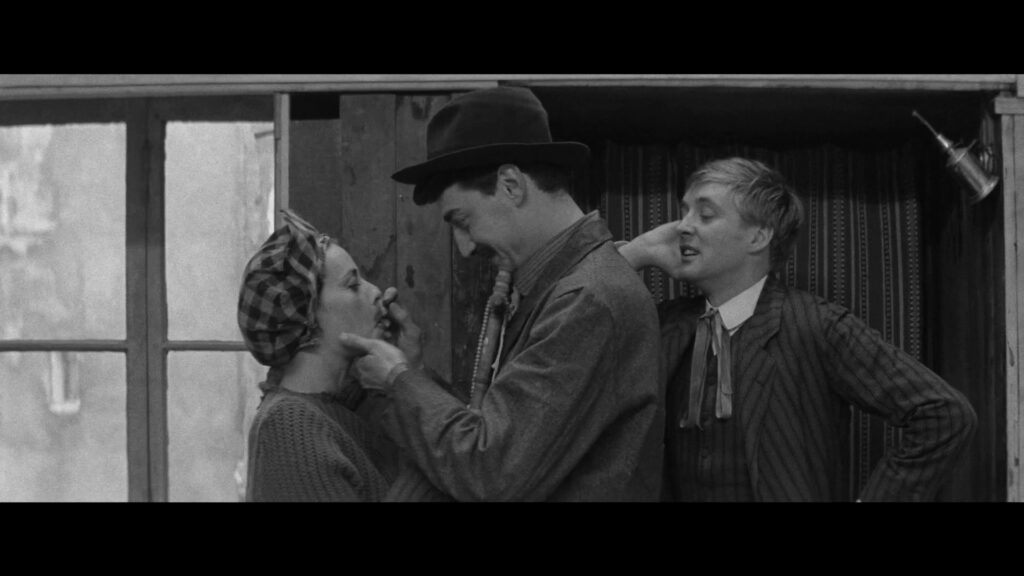
Just as soon as Jim finds out Catherine is pregnant, he learns she’s lost the baby. And that’s the end of his dream. He remains in Paris with Gilberte and moves on with his life. Promising to grow old with her and remain faithful. Something he knows Catherine could never promise. Some time later, Jules and Jim are reunited, which inevitably means Jim and Catherine are reunited. After Jim meets Catherine and she tries to seduce him, Jim makes a confession to her. It’s a long bit of exposition, but one of the best-written monologues in cinema.
Exposition is often lambasted in cinema. The idea is that you should “show, not tell”. Meanin,g don’t say the meaning of your film, let the narrative and themes speak for themselves. While that is true, there are times when exposition enhances the narrative, not hinders it. And I believe this is one of those times. Jim tells Catherine about a passage he found marked in one of her books. A passage about a woman giving herself in imagination to a stranger. Jim reads this passage as a confession. Catherine will never be content with him. She’ll never be content with anyone. Catherine is a special woman, full of curiosity and wonder. It’s what makes her so irresistible, but also so hard to hold. Catherine isn’t just the woman of his dreams because of her beauty and charm, but because of the way she views the world. Always wanting to experience new things, jumping off bridges when the moment catches her right. She’s a loose cannon. A firecracker. That’s exactly what he loves about her, and exactly why he can’t return to her. It’s here, after this confession, after Catherine realizes she won’t, maybe for the first time in her life, get what she wants, that she pulls a gun on Jim.
Nightmares
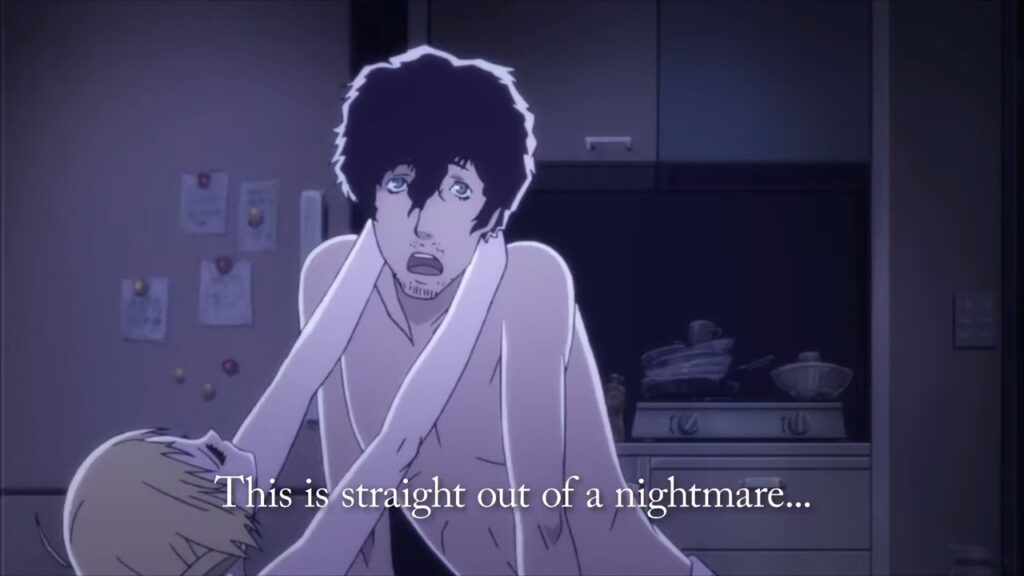
Catherine also culminates in a violent encounter. Vincent’s girlfriend Katherine comes over to his apartment one morning and finds Catherine with a C, in his home. In his bed. She’s furious and wants Vincent to explain, but Catherine won’t let her. She insults and berates Katherine, telling her how awful she is, how she can no longer satisfy, and that Vincent will remain with her. Catherine pulls a knife on Katherine, and she ends up getting stabbed. Lying dead on the floor, Vincent and Katherine exit the apartment but end up in another one of Vincent’s nightmares. One where he must now lead Katherine safely to the exit while being chased by a monster version of Catherine. After this level is beaten, the game reveals that this was a dream. The violent encounter didn’t really happen, it was just Vincent’s imagination playing tricks on him. But this isn’t the end of the story for Catherine or for Vincent.
Jim and Catherine’s violent encounter isn’t the end of the story in Jules and Jim. There is a moment of reflection for Jim. He now knows what Catherine is capable of. This moment, Catherine pulling the gun on Jim, is actually a moment in the film that I don’t really connect with. It feels a bit out of left field, and it shows the Catherine character in a light we haven’t seen her in before. Sure, she’s impulsive and a wild soul, but she’s never been violent. She may not care who she hurts on an emotional level, and through various points in the story, we realize she’s unpredictable, but never to the level of physical violence. It’s a moment that feels out of place, but it’s put in there really to set up the ending because, without this scene, the ending of Jules and Jim would have been totally out of left field.
Therese
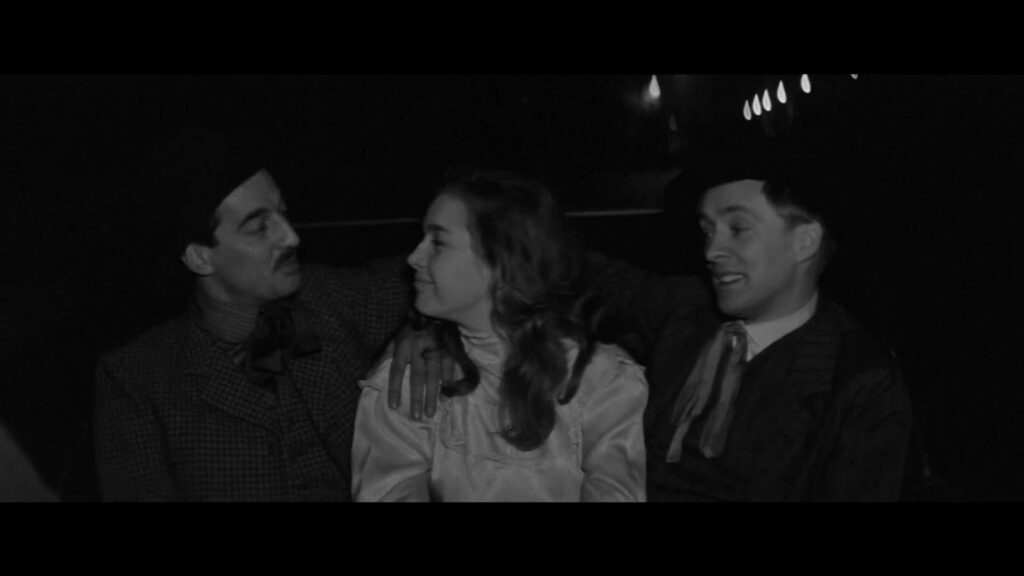
Before jumping to the ending of Jules and Jim and Catherine, I want to look at a small character in Jules and Jim. The character of Therese. Therese is introduced early on in Jules and Jim. She’s another fun-loving, carefree spirit who ends up taking to Jules. The difference here is that Therese moves on. She appears briefly at the beginning of the film, spends the night with Jules, and then quickly leaves. We only see her again later when Jim, by happenstance, runs into her at a bar. She’s thrilled to see Jim and tells her all about her life. She quickly recounts all of her escapades, the various men she’s slept with, the wild lovers she’s taken. Until she finally settled down with, as she put it, the only man she couldn’t cheat on.
I find this interaction and Thérèse’s arc in the film profound and, in a way, the entire thesis of Jules and Jim. We see a woman, briefly at the beginning of the film, having a wild escapade, going home with a random man for a night of pleasure. And then later, after she’s finished that part of her life and settled down. And after all those years, all that time spent running around living a wild, carefree life, the only thing she has to show for it is a two-minute conversation in a bar to an uninterested party.
A Life Lived
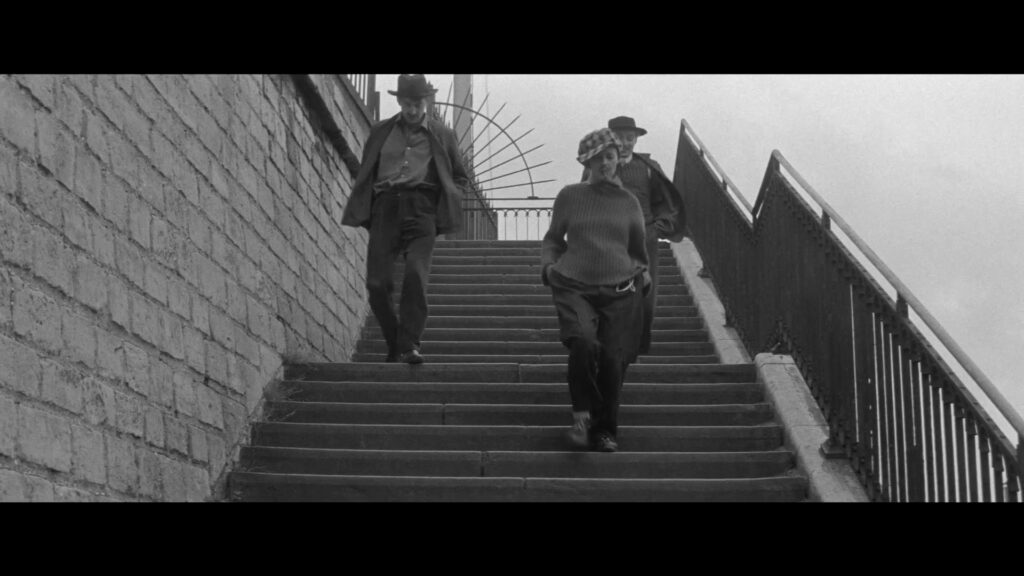
Maybe that’s a poor reading of her life, because she does have a great life. And she lived a great life. She enjoyed all the pleasures and vices the world had to offer, but eventually, she met her match. The one man whom she couldn’t cheat on, either out of love or convenience. She found a man whose energy matched hers, and the two live happily together. Content to put that life behind them. It’s what Jim wants. What he wants with Catherine, but he knows Catherine isn’t Therese. As much as he wants her to be, he knows Catherine will never be the one to settle down. Or at the very least, he won’t be the one able to do it.
Catherine and Jules and Jim share a lot of the same themes and ideas. The characters all have overlapping qualities, but it’s their goals and choices that feel so inspired by one another. In Jules and Jim, Jim wants what he can’t have. It’s not Catherine, because he can have Catherine, he’s had Catherine. It’s a life that is impossible with Catherine. A life of quiet tranquility with a doting wife. It’s a life that Jules is almost able to have. Almost. But Jules has Catherine in spite of Catherine. He is able to live with her, parent a child with her, and share the same roof, but as soon as Catherine gets bored, the moment she becomes curious about what comes next, he knows she’ll be off. She’ll be far away from him and gone for days at a time until she finally decides to return to the only constant in her life. And Jules will be waiting because that’s his job. To pick up the pieces Catherine leaves scattered.
Love Triangle

Vincent, on the other hand, has no idea what he wants. He is in a long-term loving relationship with a woman, but he craves more. He wants that excitement. The feeling that comes from meeting someone new, making love for the first time, and the ecstatic high that can only come from new love. Vincent isn’t what I would call a sympathetic character, but he’s one we can all relate to. He’s a man on the precipice of a decision. A life-changing one. Or one that keeps his life the same. The difference is that the choice is up to the player as to where Vincent’s life will go next, and what consequences await him.
The endings of Catherine and Jules and Jim are where these metaphors and narrative similes to each other abruptly end. Mainly because Catherine has 9 or 12 different endings, depending on what version you play, and Jules and Jim have only one. After Jim rejects Catherine, seeing her ability for violence, he meets with her and Jules one more time. They have a picnic together, and Catherine asks Jim to get in the car with him. Jim doesn’t hesitate. He comes as soon as she beckons, like he always does. Catherine then proceeds to start her car and drive the two of them straight off a bridge and into a watery grave. Killing both of them and leaving Jules in the same position he’s been in ever since he met Catherine. Forced to pick up the pieces.
Fin
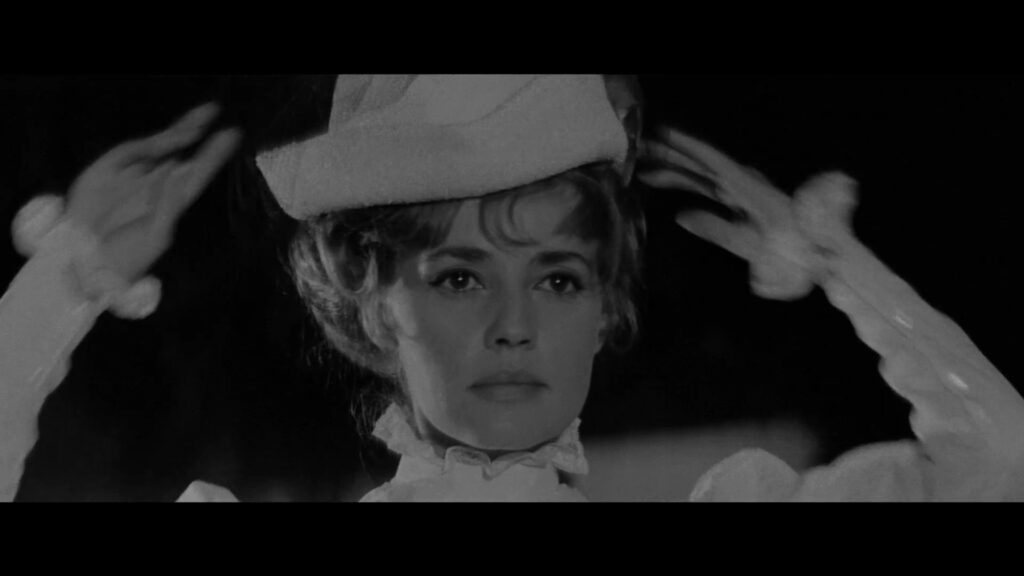
In Catherine, several different choices can be made, but the biggest reveal is that Catherine, with a C, isn’t really a person at all. She’s a succubus. One that lures and consumes men with her sexuality. Yes, it’s very strange, and the game Catherine takes a much more literal interpretation than the film Jules and Jim, but really, they both portray the same message. Jim’s demise is brought on by Catherine. He is consumed by her. By his love for her. And while Catherine in the film isn’t a literal succubus, she is a woman not to be trusted. A woman who gets her way no matter the cost. And takes all she can from whoever is willing to give it to her.
The real victim, though, is Jules. The phrase nice guys finish last may come from this film, but truthfully, he’s the only pure person in the movie. He loves Catherine unconditionally, while Catherine loves exclusively with conditions. And he’s made to suffer for this.
Endings
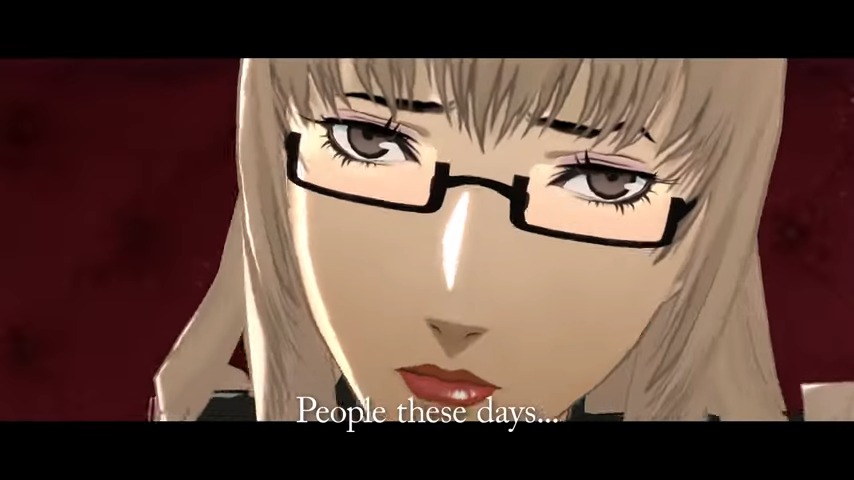
In Catherine, there are multiple endings, but my favorite is the Full Body ending for Katherine with a K from the remastered Full Body edition. In this ending, Vincent chooses Katherine. And she rejects him. Moving on from Vincent and becoming the fullest version of herself. Viewing Katherine as the Jules character, this is what we all hope for him. We want him to move on from Catherine, to find a new life and a new love. To care for his daughter, maybe meet a nice girl, one who loves him without conditions, without a need and desire to constantly see what else is out there. But alas, we don’t get this. Jules suffers the most and continues to suffer. He suffers with Catherine, and he suffers even more now that she’s gone.
Catherine and Jules and Jim are both pieces of art about relationships, love triangles, and loss. Our heroes suffer, but in Catherin,e the video game, we are able to get a happy ending. A happy ending that is unfortunately missing from our heroes in Jules and Jim. François Truffaut created a story with a brilliant narrative that has inspired countless filmmakers. But he also inspired a video game where we can make our own choices. One where we can choose to be better and give our heroes, whoever that may be, an ending they deserve.



